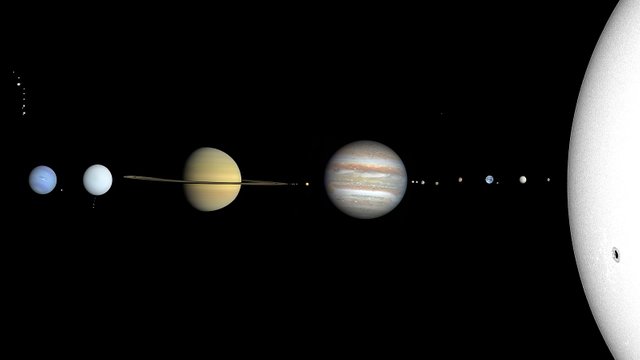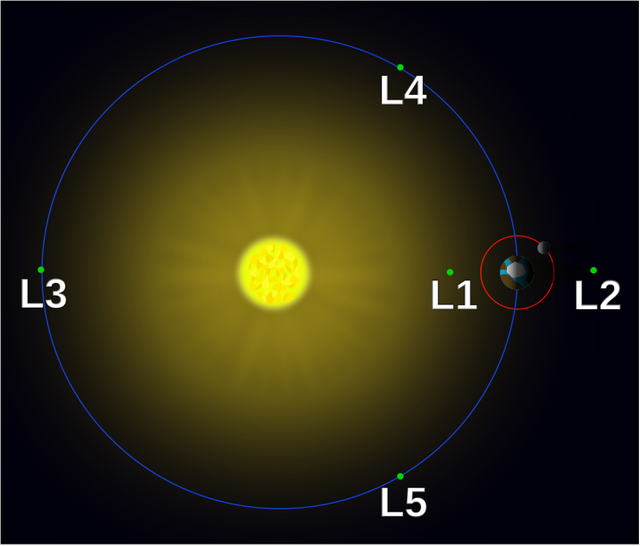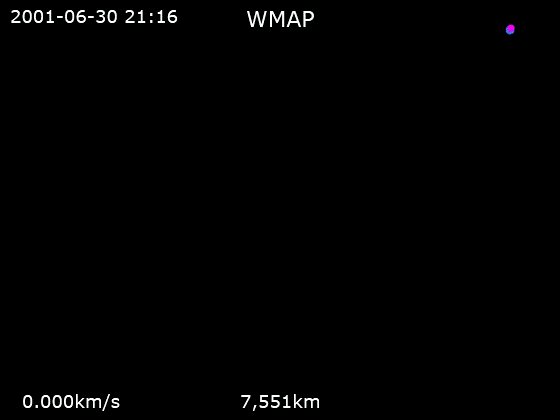Solar mission Aditya -L1 launched successfully
Hello!! Good morning to all Steemians!!
 UkipidiaThe Solar System with planets and moons in true color; Distance between them is not to scale
UkipidiaThe Solar System with planets and moons in true color; Distance between them is not to scale
The Aditya -L1 spacecraft will be placed in a holo orbit at the Lagrange L1 point of the Sun-Earth system, which is a point in space where gravitational force of the Sun and Earth are equal.
 Ukipidia Lagrange points in the Sun–Earth system (not to scale). This view is from the north, so that Earth's orbit is counterclockwise
Ukipidia Lagrange points in the Sun–Earth system (not to scale). This view is from the north, so that Earth's orbit is counterclockwise
The distance between this point and Earth is 1.5 million Km ( 1% of total distance to Sun). This orbit being parpendicular to the line joining the Sun and Earth will allow the spacecraft to view the Sun constantly ensuring continuously monitoring of solar activities. Aditya-L1 will neither land on the Sun nor approach the Sun beyond Lagrange L1 point.
The spacecraft will carry 7 payloads to observe the Sun's photosphere, chromosphere, corona using various detectors. 4 payloads will directly view the Sun from the Lagrange L1 point, while 3 will conduct in-situ studies of particle and fields at L1.
The major objective to study Coronal heating and solar wind acceleration, Coupling and and dynamics of the solar atmosphere, Solar wind distribution and temperature anisotropy and Initiation of Coronal Mass Ejection, flares, and near Earth space whether.
Launch vehicle PSLV-C57 is the 59 flight of PSLV and 25th mission using PSLV-XL configuration having height of 44.4 meters and 321tonnes of lift-off mass with 4 propulsion stages.
The third stage of separation of orbiter Aditya -L1 from PSLV has been completed. It has been precisely placed into its intended orbit by PSLV-C57. The Orbiter travel time from launch to L1 point would take about four months.
The mission trajectory stages are Earth -centric orbit transfer, Earth's sphere of influence exit, Cruise phase, and Holo orbit insertion in L1.
 UkipidiaAnimation of Wilkinson Microwave Anisotropy Probe Trajectory; An example of a spacecraft at Sun-Earth L2 (WMAP Earth)
UkipidiaAnimation of Wilkinson Microwave Anisotropy Probe Trajectory; An example of a spacecraft at Sun-Earth L2 (WMAP Earth)
Other major missions are:
SOHO (Solar and Heliospheric Observatory) is a joint mission by the European Space Agency (ESA) and NASA.
STEREO (Solar Terrestrial Relations Observatory) is a NASA mission.
Hinode (Solar-B) is a Japanese mission.
Parker Solar Probe is a NASA mission
Thank you all for reading my post!!
@tipu curate
Upvoted 👌 (Mana: 5/7) Get profit votes with @tipU :)
Thank you for reading my post again.